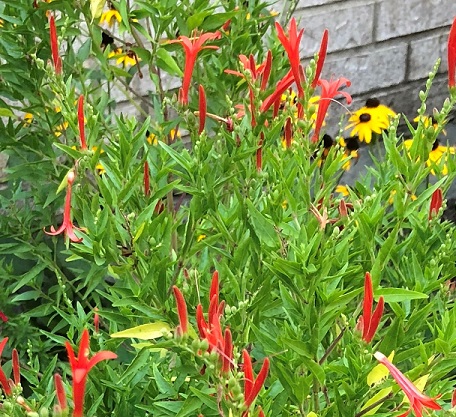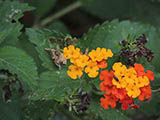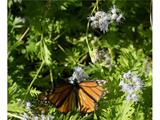From now until late October, we will feel the heat in our gardens in southeast Texas in a big way. Lush green foliage and flowering plants give way to dry, parched soil and the need for watering to keep our gardens alive. However, not all plants succumb to the hot and dry Texas heat! Let’s take a look at three natives that thrive in these tough conditions. These plants not only love Texas heat, they are also pollinator magnets.
First of all, if you aren’t growing this stunner, you should be! Flame Acanthus (Anisacanthus quadrifidus var. wrightii) is a tough, Texas perennial with bright green foliage and hot red-orange tubular flowers.

It isn’t surprising that Hummingbirds can’t resist it when flowers begin in mid-June and often last through the end of the year. Plant in full sun if possible, partial shade is okay too. Prune back after blooming stops to retain a shrub-like form.
Second, if you love butterflies, you must have Texas Lantana (urticoides) in your landscape.
 It emerges from dormancy as soon as temperatures warm up. It grows fast and begins flowering as early as April. A member of the verbena family, you will recognize the native species of this drought tolerant perennial’s bright red, orange, and yellow, tubular flowers with four flared lobes. Lantana thrives in poor, well-drained soil. Warning: Leaves give off a sharp aroma when touched and they can cause a skin rash.
It emerges from dormancy as soon as temperatures warm up. It grows fast and begins flowering as early as April. A member of the verbena family, you will recognize the native species of this drought tolerant perennial’s bright red, orange, and yellow, tubular flowers with four flared lobes. Lantana thrives in poor, well-drained soil. Warning: Leaves give off a sharp aroma when touched and they can cause a skin rash.
Finally, Gregg’s Mistflower (Conoclinium greggii) is another gorgeous Texas perennial with fluffy lavender-blue flowers that attract impressive numbers of Queen butterflies.  This shrubby, easily spreading native will flourish in sun to part shade and tolerate sandy, loam, clay or limestone soils. It blooms as early as March and lasts through the fall!
This shrubby, easily spreading native will flourish in sun to part shade and tolerate sandy, loam, clay or limestone soils. It blooms as early as March and lasts through the fall!
For reference or more information on Texas natives, visit www.wildflower.org/plants.